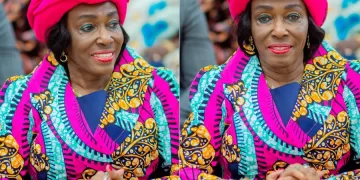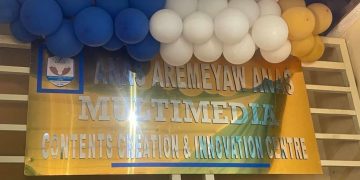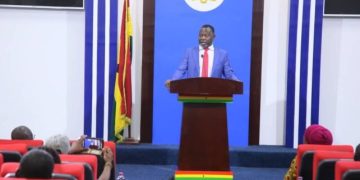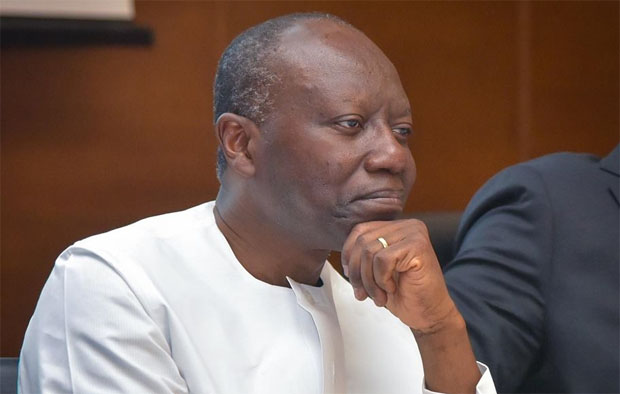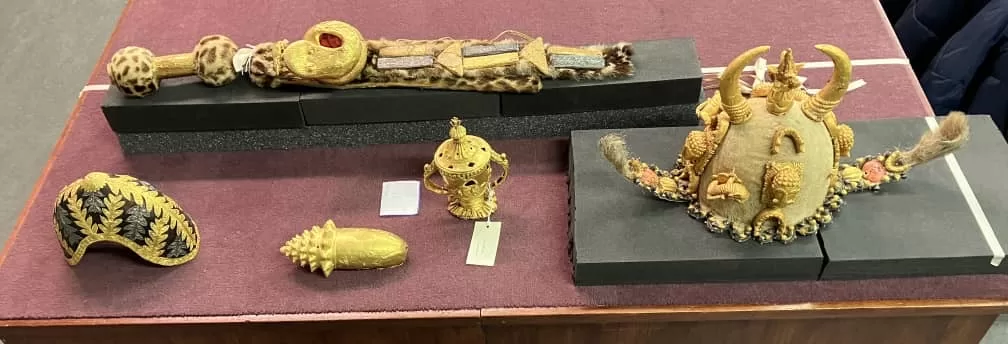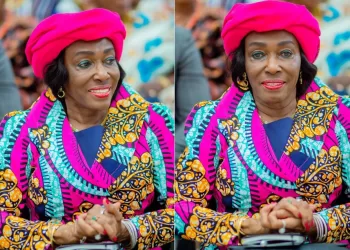After 150 years, 39 of the Asante royal regalia and objects looted by British troops during the third Anglo-Asante war of 1874 popularly known as Sagrenti War, are due to return to the Asantehene in Kumasi in February and April, this year.
The first batch of seven treasures is expected from the Fowler Museum of the University of California in Los Angeles in February, while the second batch of 32 will arrive from two leading cultural institutions in the United Kingdom- the British Museum the Victoria & Albert (V&A) Museum – in April.
A joint statement from the museums in London is expected to announce the return of the collections.
The move follows the approval by trustees of the British and V&A Museums for the treasures to be repatriated to their original home in Kumasi, Graphic Online understands.
The treasures will form part of an exhibition planned to celebrate the Silver Jubilee enthronement of Otumfuo Osei Tutu II, as well as commemorating the 150th anniversary of the third Anglo-Asante War and the centenary of the return of the Asantehene Prempeh I from exile in the Seychelles.
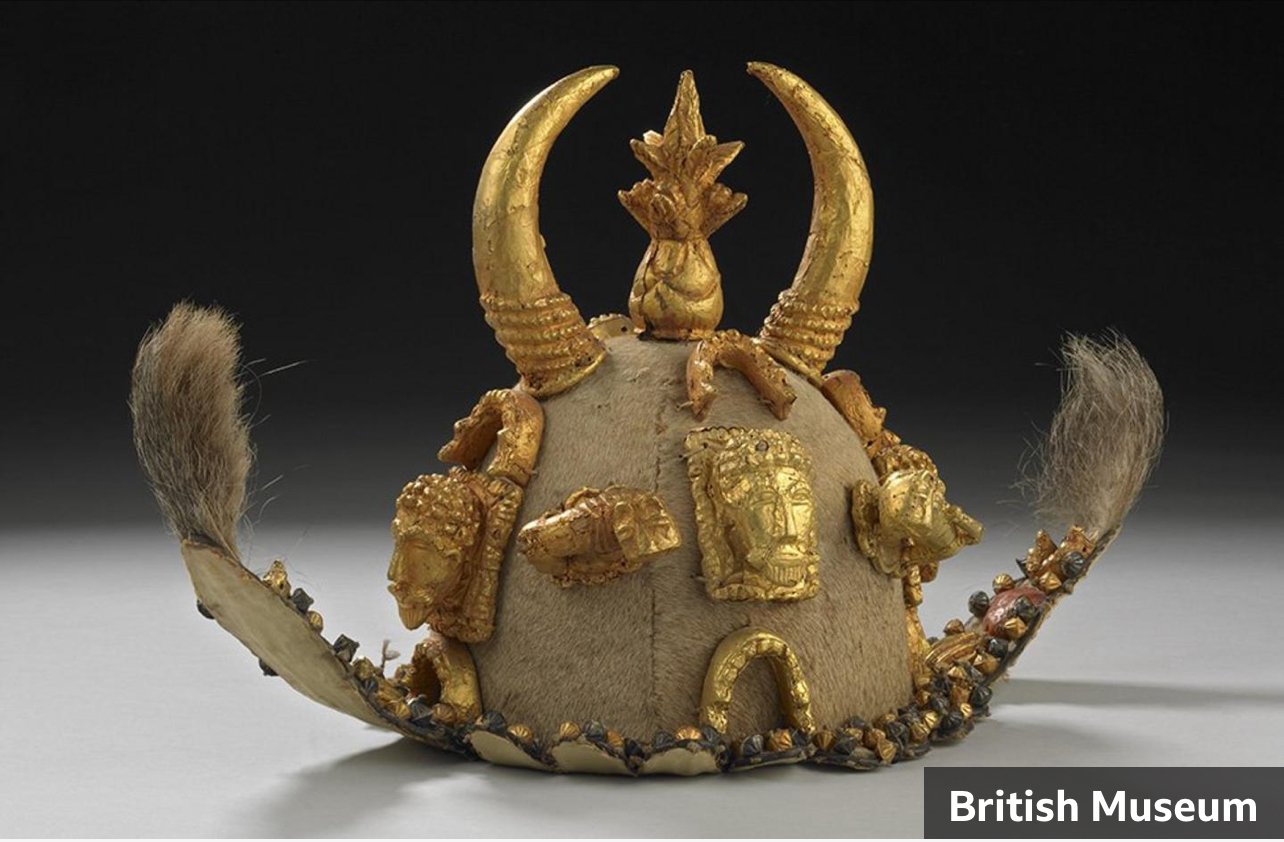
Specifications
Graphic Online’s Kwame Asare Boadu reports from Kumasi that 15 of the returning collections from Britain are from the British Museum while 17 are from the V&A Museum.
The collections, which range from the original sacred Mponponsuo state sword dating back to 300 years to other ornaments of silver and gold, come under two separate agreements.
The Mponponsuo sword is what all Asantehenes traditionally swore their oath of office and paramount chiefs their allegiance to the Asantehenes.
The returning Mponponsuo sword is believed to be the original, while the one in use today in Kumasi was created after 1900.
Those coming from the British Museum also include a small gold ornament in the form of a lute-harp (sankuo) given by the Asantehene Osei Bonsu to the British trade diplomat, TE Bowdich in 1817 even as many of what were looted directly from the palace(s) in Kumasi formed part of the regalia of respective Asantehenes, Kofi Karikari (1837-1884) and Prempeh I (1870-1931).
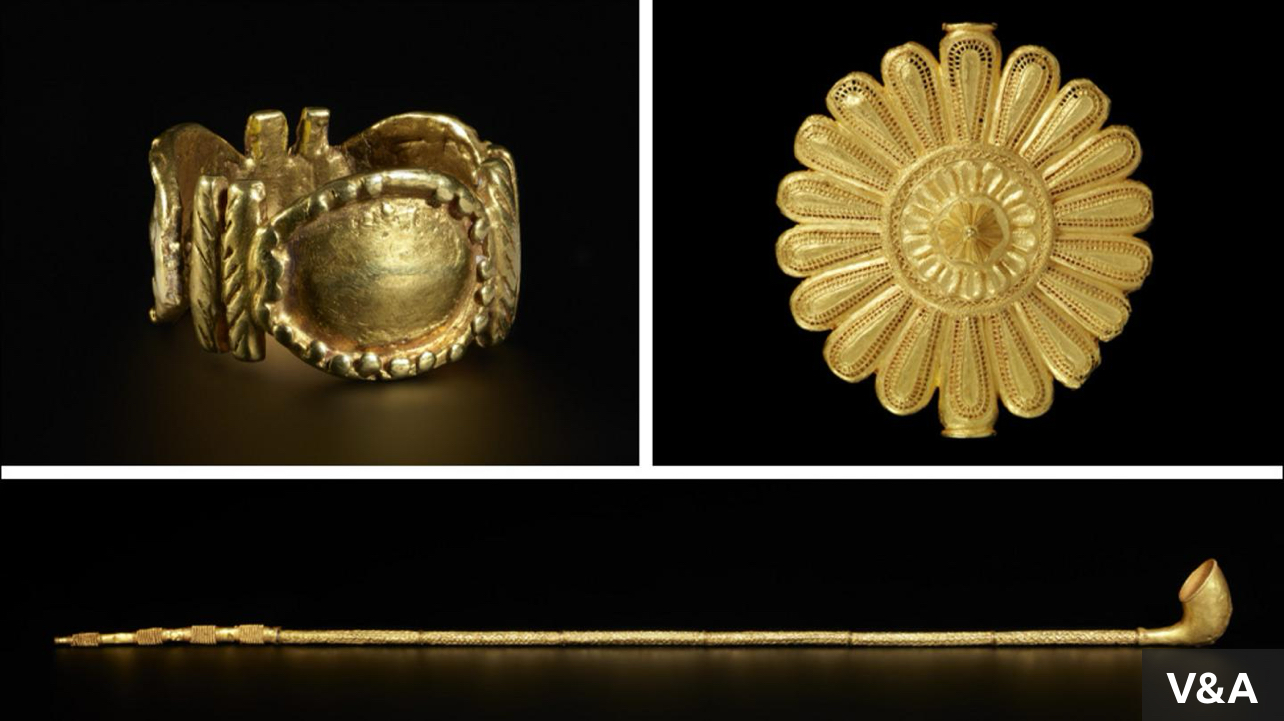
Those from the V&A Museum include 1 gold peace pipe, 3 cast gold soul-washers’ badges, 7 sections of sheet-gold ornament, 1 silver straining spoon, 1 pair of silver anklets, 1 section of sheet-gold ornament and 1 cast gold soul-washer’s badge.
Fowler Museum
The objects in the Fowler Museum got to the United States from Britain and were later acquired by the museum through the Wellcome Trust in 1965.
This permanent return follows the university’s decision that all looted objects should be returned to the countries of their origins.
Display of items
Items of gold and silver regalia associated with the Asante royal court will be displayed in Kumasi later this year as part of a long-term loan commitment by the British Museum and the Victoria & Albert Museum. Many of these items will be seen in Ghana for the first time in 150 years.”
The items will be at the Manhiya Palace Museum which is located within the palace complex of the Asantehene.
The set of long-term objects could possibly be in Kumasi for six years.
A profit-making museum, the Manhyia Palace Museum with an annual visitation number of around 80,000, is expected to dramatically increase in revenue numbers.
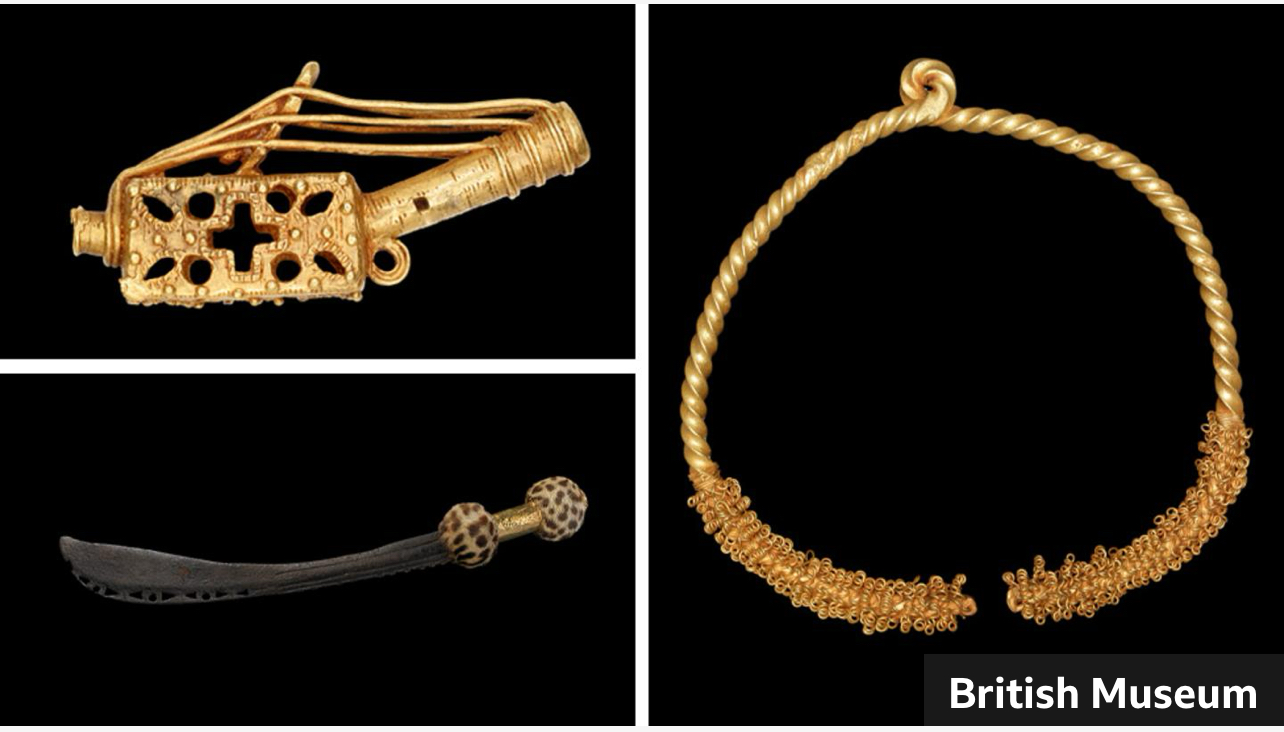
Restitution discussions
The loan return had been the subject of model discussions for over-half a century.
In May 2023, Otumfuo Osei Tutu II met with the leadership of the two museums in London and re-opened discussions for the restitution.
He appointed as technical advisors, Ghanaian historian and museum economist, Ivor Agyeman-Duah and a Scottish former Keeper of Ethnography at the British Museum and Vice Principal of the University of Glasgow, Prof. Malcolm McLeod who previously helped to establish the Manhyia Palace Museum.
The last nine months also led to the selection and approval from the Asantehene of the objects that are being returned.
Partnerships
The Director of the V&A Museum, Dr Tristram Hunt stated, “V&A is proud to be partnering with the Manhiya Palace Museum to display this important collection of Asante gold work. As part of our commitment to sharing collections with a colonial past, we are excited to see these items on public show in Ghana, as part of Otumfuo Osei Tutu II’s Silver Jubilee celebrations. We thank him for his leadership, and look forward to further collaboration.”
The Keeper of Africa, Oceania and the Americas at the British Museum, Lissant Bolton said: “We are privileged to have built a long-standing cultural partnership with Manhyia working together over the past five decades. This relationship is of great importance to us. We are delighted to be lending these beautiful and significant cultural objects for display at the Asantehene’s Silver Jubilee year.”
Otumfuo to speak in London
As part of the continuing cultural cooperation, Mr Agyeman-Duah confirmed that, aside major directors of UK museums visiting Kumasi in April and May, Otumfuo Osei Tutu II will give a major lecture at the invitation of the British Museum and the Victoria & Albert Museum in London in July, this year.
Sagrenti war
In 1874, the British army led by General Sir Garnet Wolseley charged on the Asante army which had earlier inflicted a crushing defeat on the British , and had also been attacking the coastal states of the Gold Coast.
Because the people of Gold Coast could not pronounce the name Sir Garnet Wolseley, the war was referred to as the “Sagrenti War”.
An article titled, “ the Sagrenti war and the sacking of Kumasi” published by the Edward A. Ulzen Foundation, stated, “ The capital, Kumasi, was abandoned by the Ashanti when the British arrived on February 4. They demolished the royal palace with explosives, leaving Kumasi a heap of smouldering ruins. “



